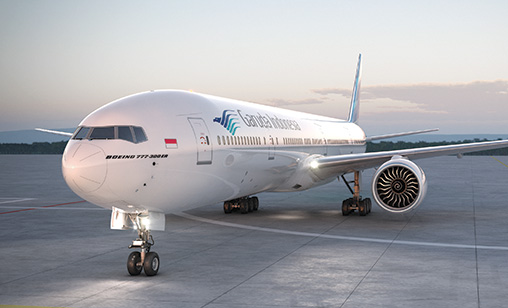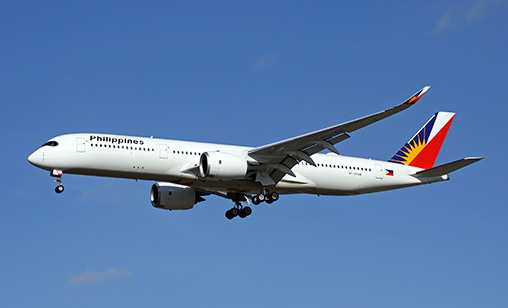News Backgrounder
COVID-19 delivers another blow to struggling Asia-Pacific flag carriers
Pre-pandemic several Asia-Pacific airlines were reporting record profits, but some of their peers were in trouble. Can these financially fragile carriers survive COVID-19? Associate editor and chief correspondent, Tom Ballantyne, reports.
June 1st 2021
It has been tough enough for the Asia-Pacific’s leading carriers to keep their businesses alive during COVID-19, but in one part of the region several airlines have been operating on a financial knife edge for several years. Read More »
In many Southeast Asia countries, the pandemic is far from under control.
 |
The future of some flag carriers - Malaysia Airlines Group (MAG), Thai Airways International (THAI), Philippine Airlines (PAL) and Garuda Indonesia – depends on good management and a smooth path to market recovery. And it does not look like this will happen any time soon.
In Manila, the situation is dire. Last month, it was reported PAL had been in talks with aircraft lessors that included news the carrier was considering filing for Chapter 11 bankruptcy in the U.S. PAL has been in the red since early 2017. It reported a $607 million loss in the first nine months of 2020. It has cut a third of its workforce, or approximately 2,300 jobs, as the pandemic took hold internationally and domestically.
Privately-owned by Filipino tycoon, Lucio Tan, PAL has a fleet of 61 aircraft. Its fight for survival has become more tenuous after the country’s finance secretary, Carlos Dominguez, told private banks to take the lead in assisting airlines.
But PAL president, Gilbert Santa Maria, speaking in a webinar on tourism, said the airline had the largest fleet in the Philippines.
Following the reports of a possible Chapter 11 filing, the airline said operations would not be affected by the restructuring. “Philippine Airlines management and stakeholders continue to work on a comprehensive restructuring plan that will enable PAL to emerge financially stronger from the current global crisis,” said spokesperson, Cielo C. Villaluna.
In Thailand, there has been some relief for troubled THAI, which has been operating under bankruptcy protection since last year. Its total debt was calculated at $13 billion when creditors formally approved its financial rehabilitation plan last month. Despite the reprieve, some questions remain.
 |
Chapter four of the plan said THAI requires consistent state support and should be allowed to operate its aviation and related businesses with the same privileges accorded to it before it ceased to become a state-owned enterprise and entered the debt rehabilitation process. It calls for the State to help the airline secure $1.6 billion in fresh funding.
The problem is Thailand’s State Enterprise Policy Office insists the government is under no obligation to come to the airline’s rescue, a stance apparently underscored by THAI’s former acting president, Chansin Treenuchagron, who said that under the plan, the government is not obliged to bail out the airline nor it is required to act as a loan guarantor as the carrier tries to get back on its feet.
THAI’s troubles are far from over. It is shedding several thousand employees from its 20,000-strong workforce through early retirement schemes and is in a tussle with its unions about new employment contracts.
While it has gone through many turbulent years of volatile profitability and losses as well as multiple management changes, MAG is probably best placed among the strugglers to see the crisis through. It has completed a successful restructuring and has a long-term business plan that foresees a return to break-even and cash flow positive status by 2023. The restructuring produced $3.6 billion of savings.
MAG appears to have a strong recovery plan. Group CEO, Captain Izham Ismail, said the vision is to become a leading global travel group, focused on delivering customized end-to-end solutions. “Our business is diversified and leverages Malaysia’s strategic advantage to develop a regional aviation hub in maintenance, repair and overhaul (MRO), cargo and logistics, ground solutions and aviation learning and development. We are disrupting the current organization internally to be fit for the future,” he said.
It forecasts non-flying revenue will grow from about $500 million to $1 billion by 2025. He said there were three key financial objectives to be managed: the restructuring of the balance sheet that is completed, the turnaround of the profit and loss and cash flow stability.
 |
“We will have to be very cautious about our investments, especially with the commitment by shareholders in providing us with working capital. We must be very assertive about where we want to invest,” said Izham. He revealed the bulk of the $870 million invested by Malaysia’s sovereign wealth fund, Khazanah Nasional Bhd, is for growth and investments in digital, MRO, aircraft deliveries and entry into service and other aerospace opportunities.
MAG intends to retire its fleet of six A380s, a move that has long been planned, although finding buyers for the aircraft is difficult. The group is committed to taking delivery of 25 B737 MAXs from 2024 as part of its agreement with Boeing, which is a creditor. “We are exploring taking the aircraft earlier. I hope the issues involving the B737 MAX will be resolved by then,” Izham said. He stresses that despite the successful restructuring of MAG, the company continues to operate in crisis mode. The relevance of his comments was proven true when a new Movement Control Order was imposed in Malaysia after a spike in COVID-19 cases was identified. The airline was forced to cut its network by 85% from June 1-June 14 in response to the lockdown and consequent fall off in passenger demand.
The carnage has not been confined to Southeast Asia’s flag carriers, including in Malaysia.
Airlines in the region have received very little assistance from their governments. The AirAsia Group, based in Kuala Lumpur, has announced a first quarter loss to March 31, 2021 of 767.4 million ringgit (US$185.5 million). The result was an improvement over a 803.8 million ringgit net loss a year earlier, but revenue still declined by 87.1%, AirAsia said. “Sufficient liquidity” was “the key priority” to support the LCC group’s strong return, group boss, Tony Fernandes, said.
Joint venture long-haul LCC, AirAsia X, has reported a record loss for the first three months of the year, its eighth consecutive quarterly loss. It revealed a massive deficit of $1.39 billion for the quarter - more than 10 times its losses of $132.7 million for the same period in 2020.
In Thailand, seven local airlines demanded a meeting with Prime Minister Prayut Chan-o-cha to ask about the government’s reaction to their request for long-awaited soft loans. The Thai Airlines Association said it wanted to discuss any progress on a funding proposal which, if granted, would throw domestic carriers a much-needed financial lifeline.
Last year Thai AirAsia, Thai AirAsia X, Bangkok Airways, Nok Air, Thai Smile Airways, Thai Lion Air and Thai VietJet Air had been promised $770 million baht (US$31.17 million) in soft loans to sustain their operations. They have reduced that request to $450 million baht but are still waiting for the funds support.
Some of the group is on the verge of collapse. In May, Nok Air submitted a business rehabilitation plan to Thailand’s official receiver after its two extensions expired and further rehabilitation was planned with creditors. The company’s strategy included a request to the Central Bankruptcy Court for two additional extensions to submit its rehabilitation plan: one month for each extension, said chief executive, Wutthiphum Jurangkool, in a statement.
In July last year, loss-ridden Nok Air became the second local carrier, following THAI, to file a rehabilitation petition with the country’s Central Bankruptcy Court.
| Garuda Indonesia vulnerable to closure as debt balloons In a statement to the Indonesia Stock Exchange in the first week of this month, Garuda Indonesia said it is operating only 53 of its 142 aircraft. The carrier, which leases 95% of its fleet, is seeking to return many of its leased planes to cut operational expenses. “The company is still negotiating with lessors over the grounded aircraft, either to resume their operations or return them,” the statement read. The State-Owned Enterprises Ministry estimates the carrier has debts of more than $4.5 billion and loses more than $100 million monthly. The airline is cutting wages, delaying salary payments, speeding up early retirement programs and terminating contract workers. “The company estimates it owes $23 million in unpaid wages at Dec. 31, 2020,” the stock exchange statement said. |
Usmanov Alexie says:
September 13th 2021 03:00pm